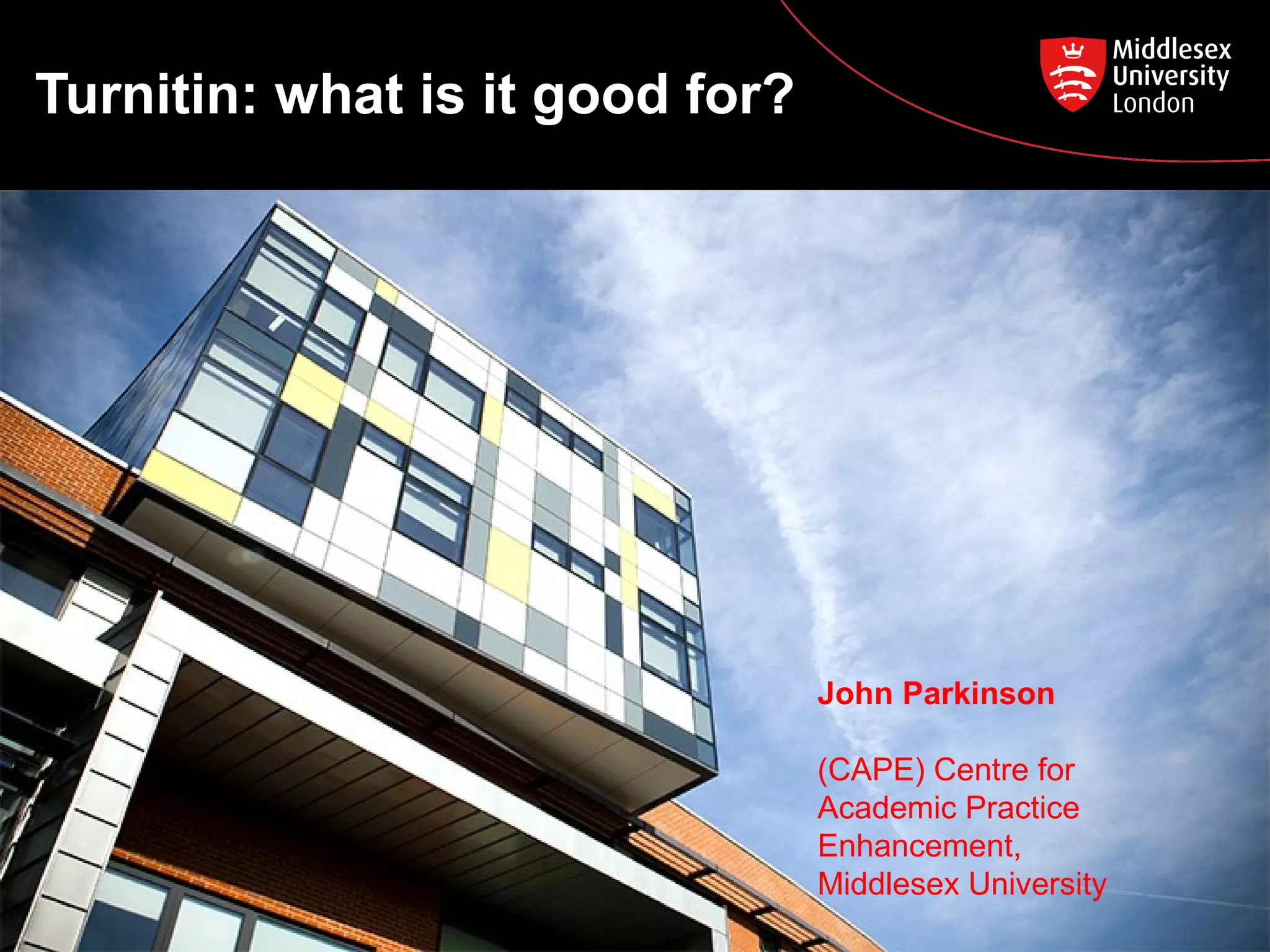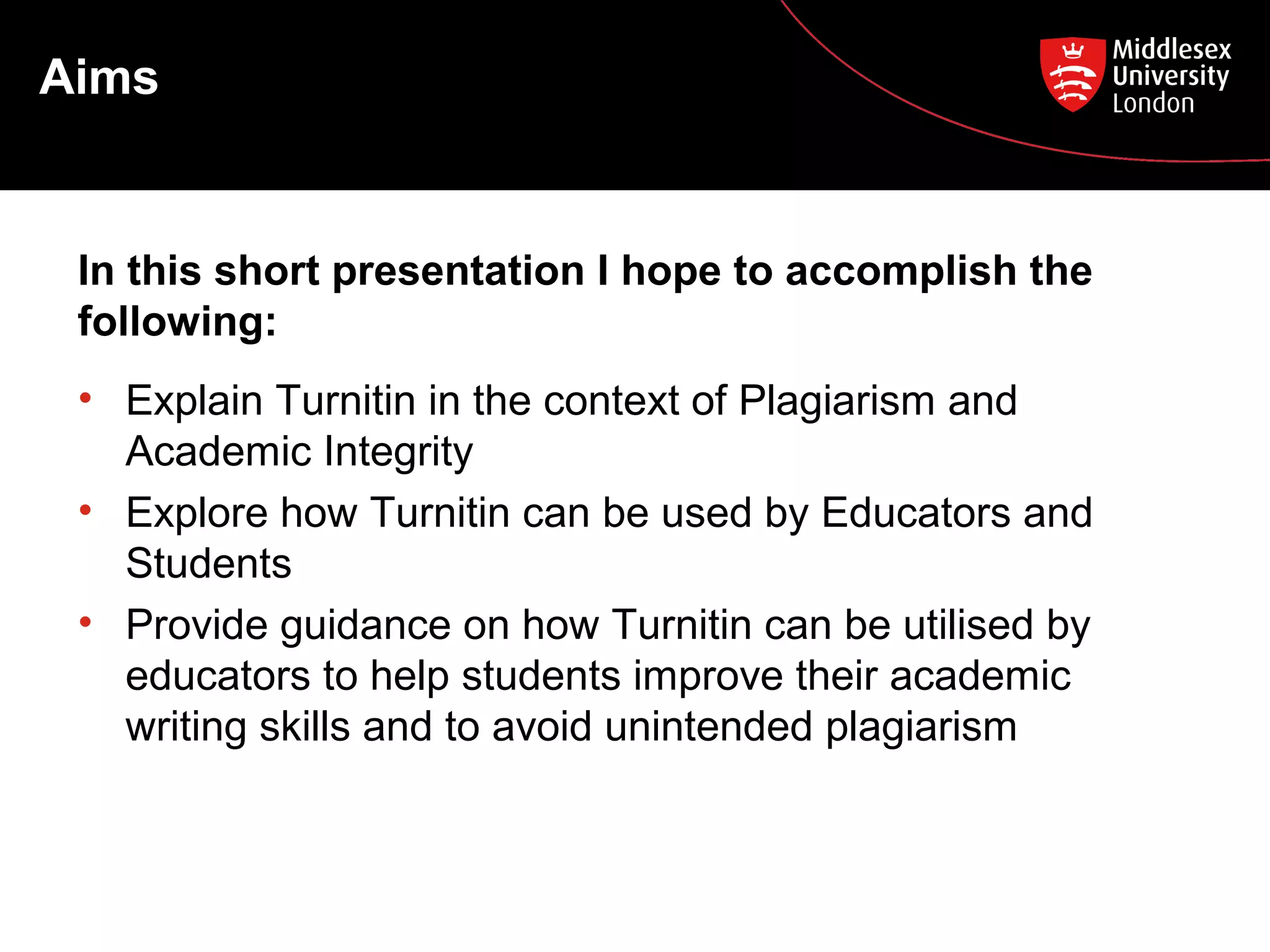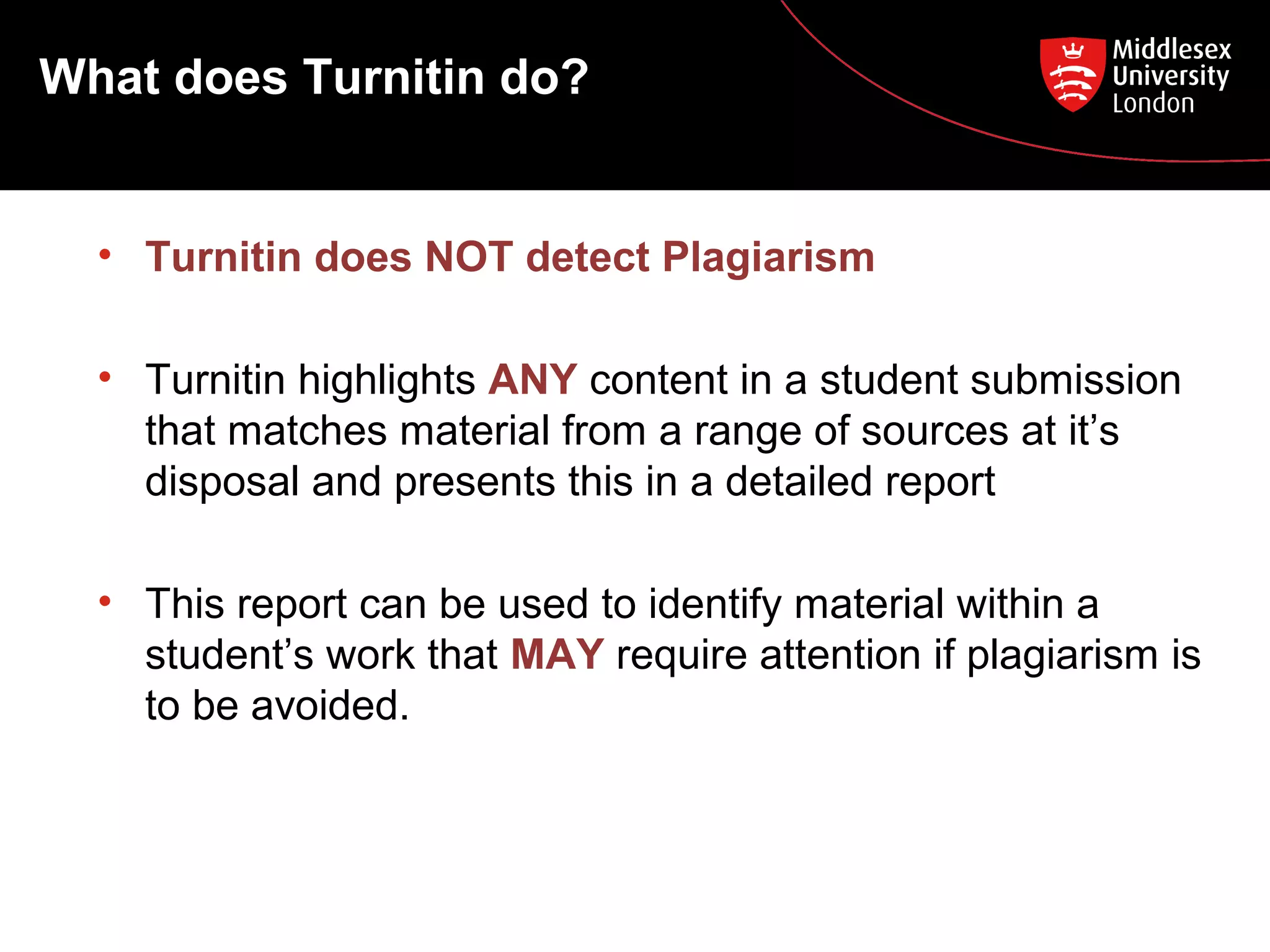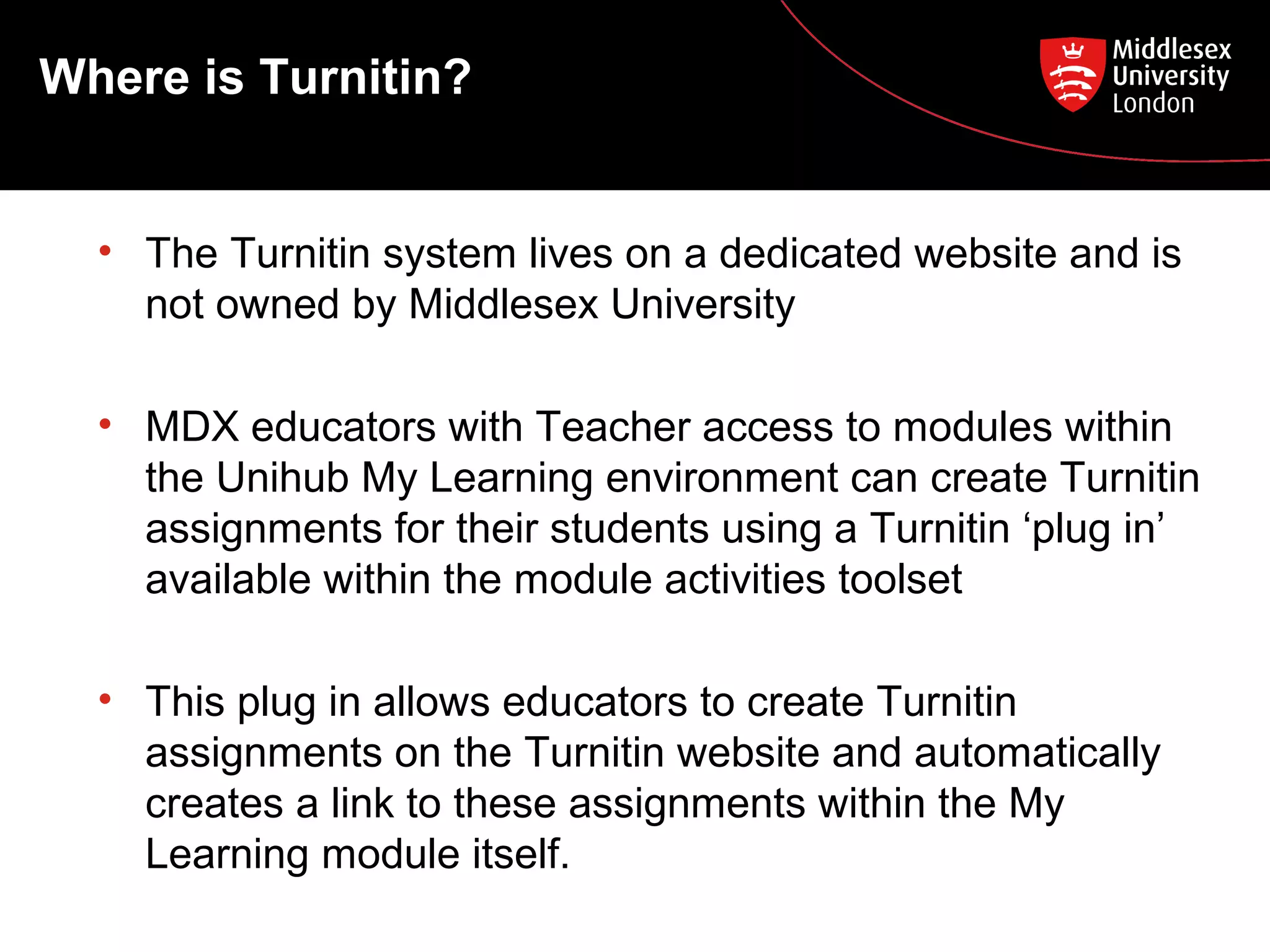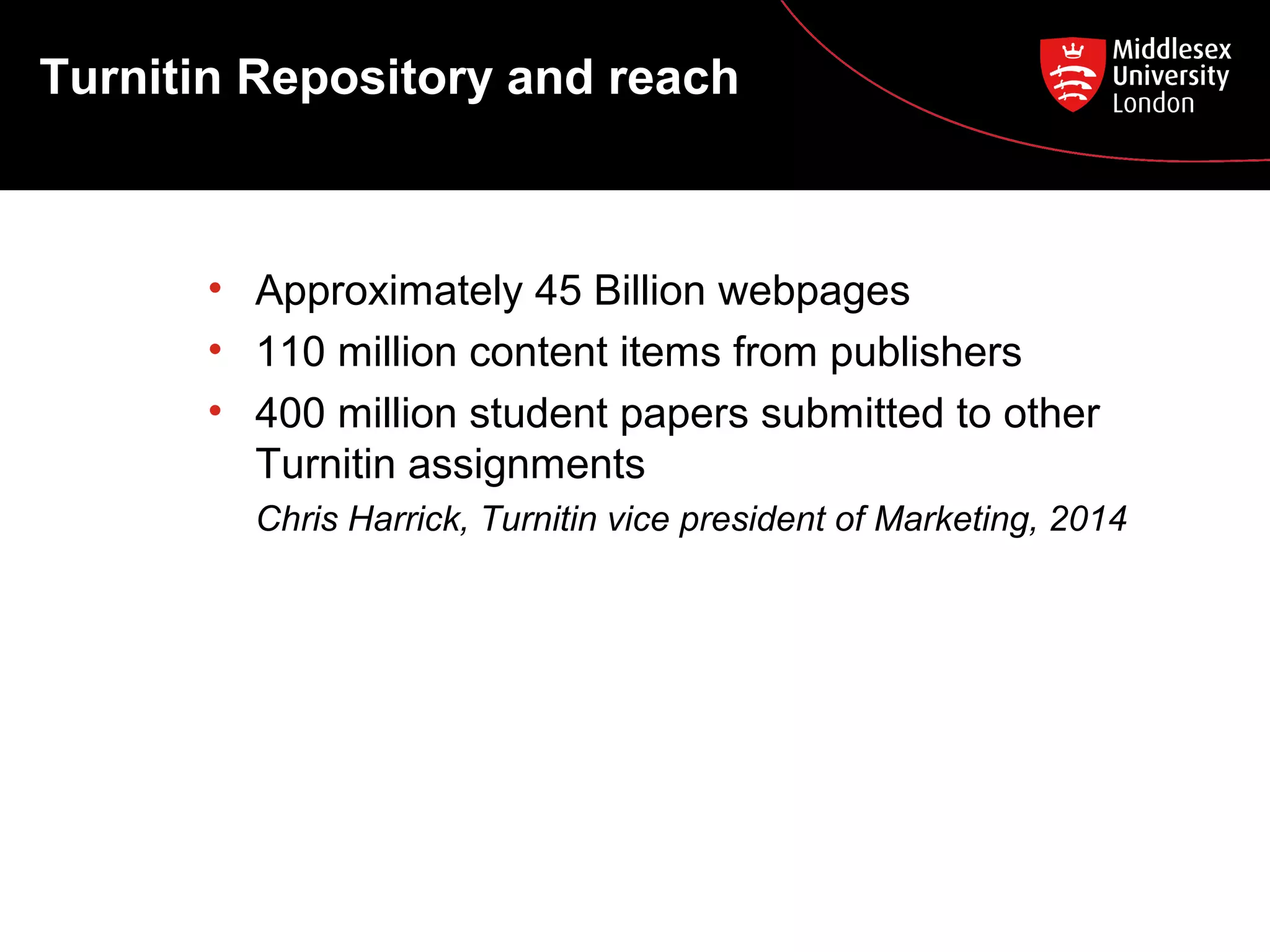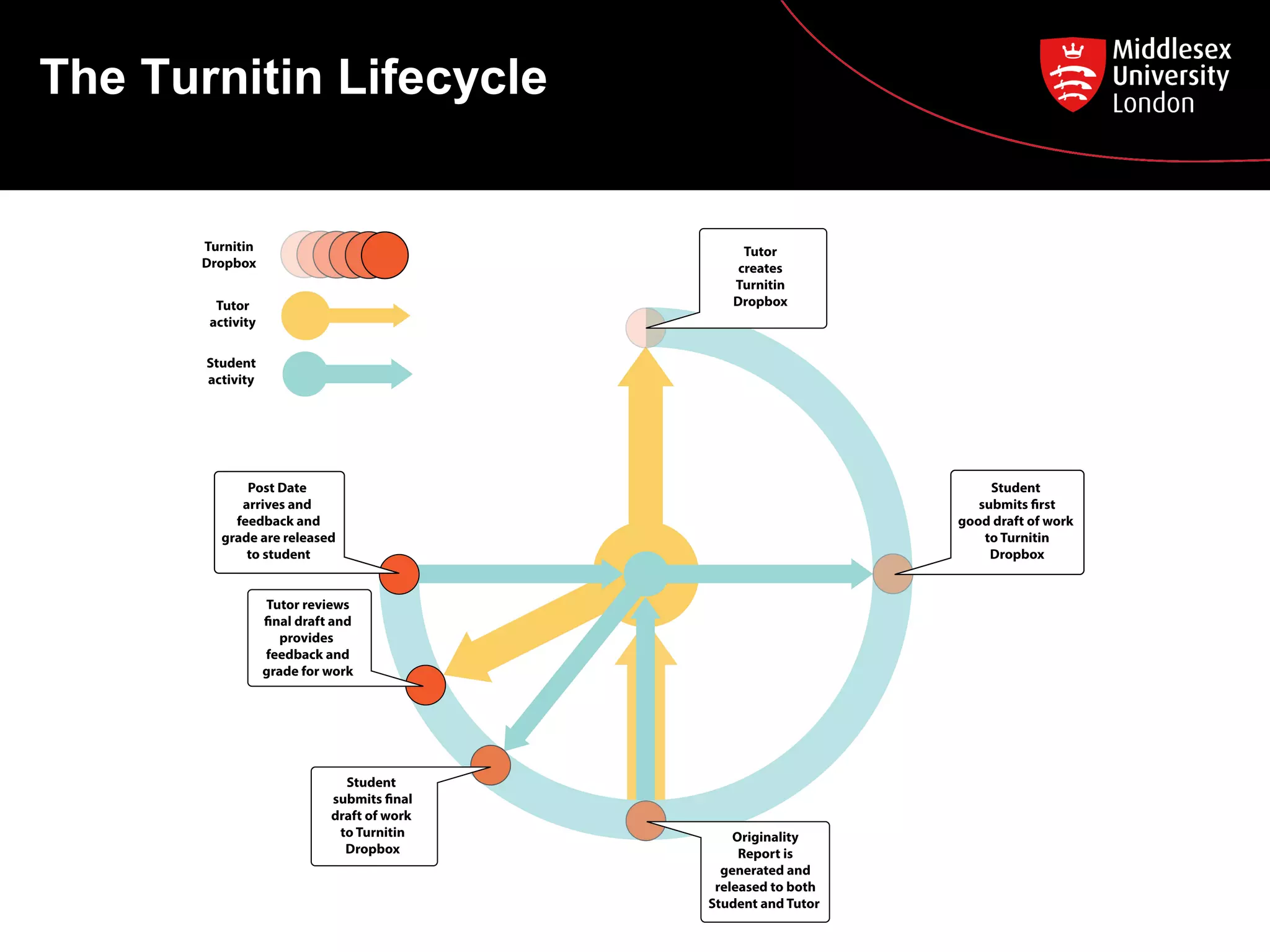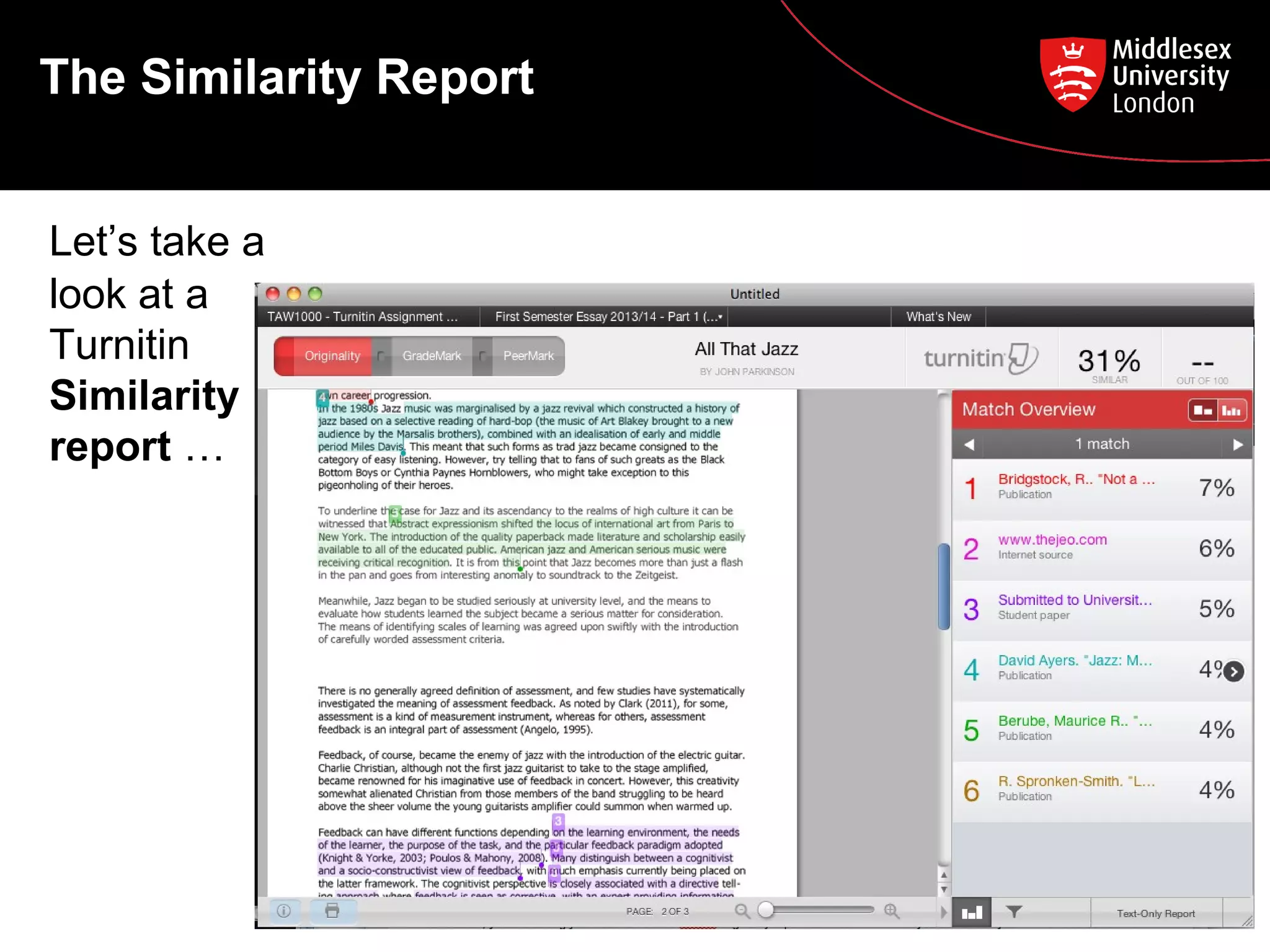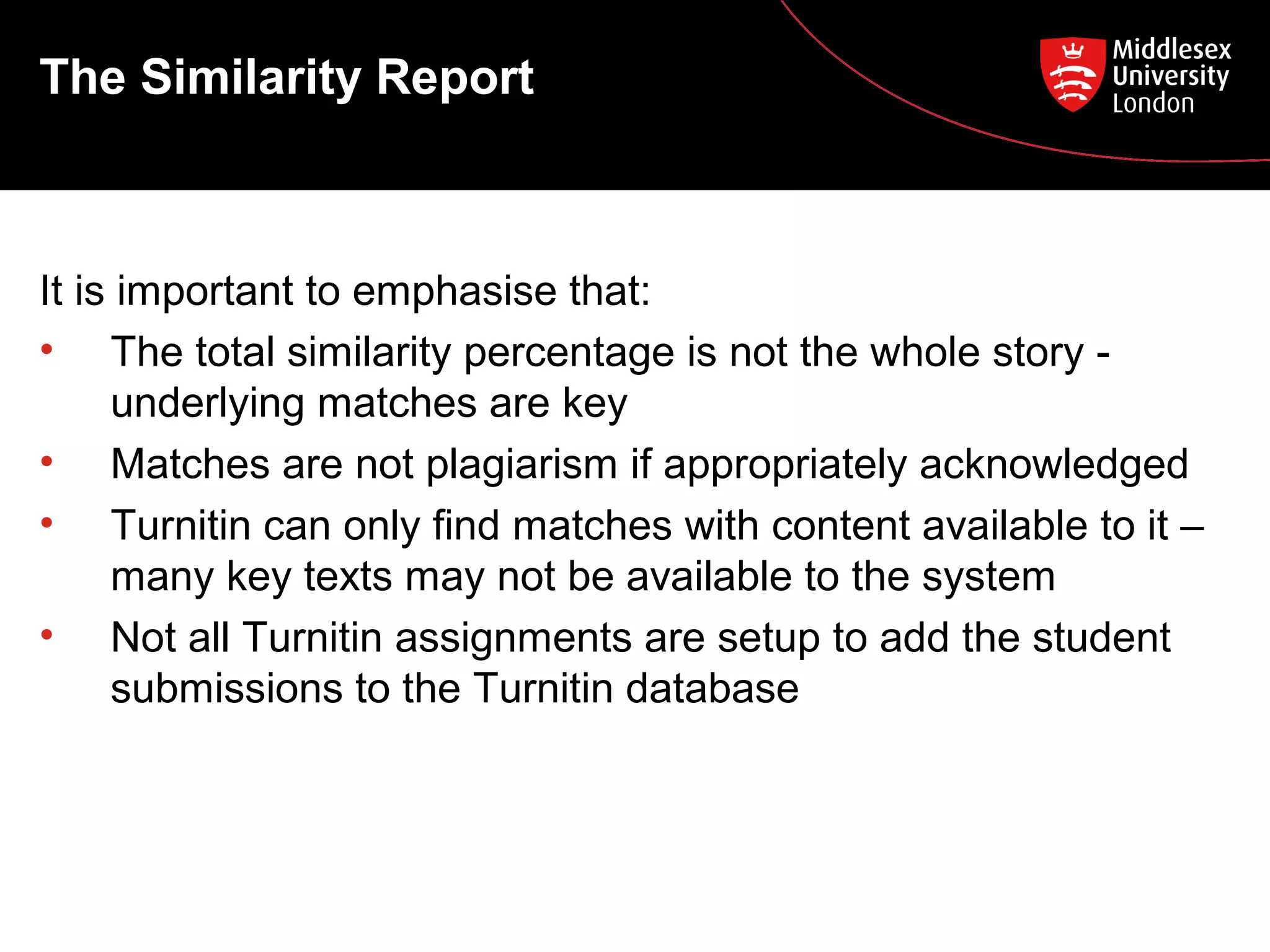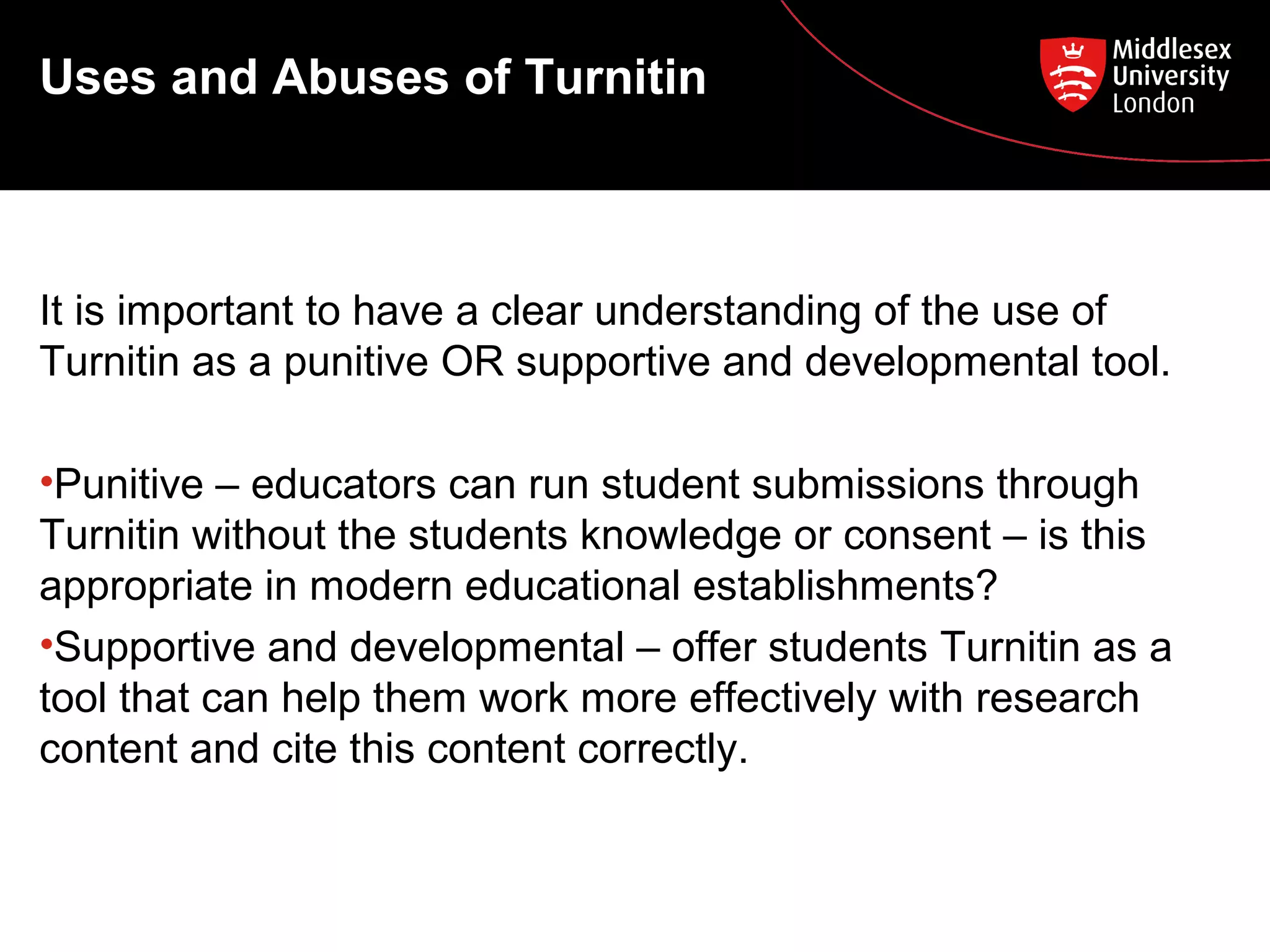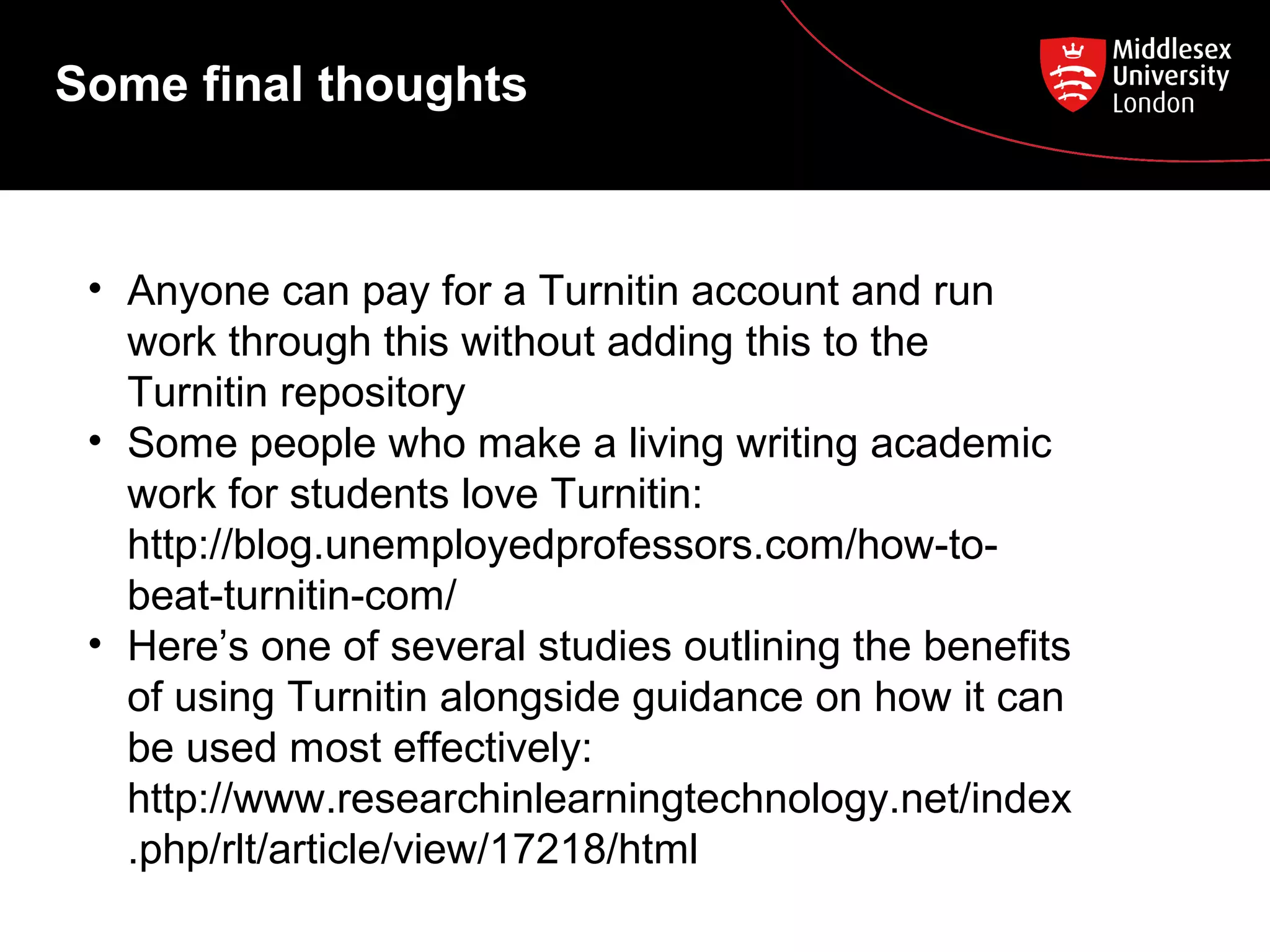This document discusses Turnitin's role in preventing plagiarism and enhancing academic integrity by generating similarity reports that highlight matching content in student submissions. It emphasizes the importance of understanding Turnitin as both a punitive tool and a means for student development in academic writing. The document also outlines how educators can utilize Turnitin effectively within the university's framework.
